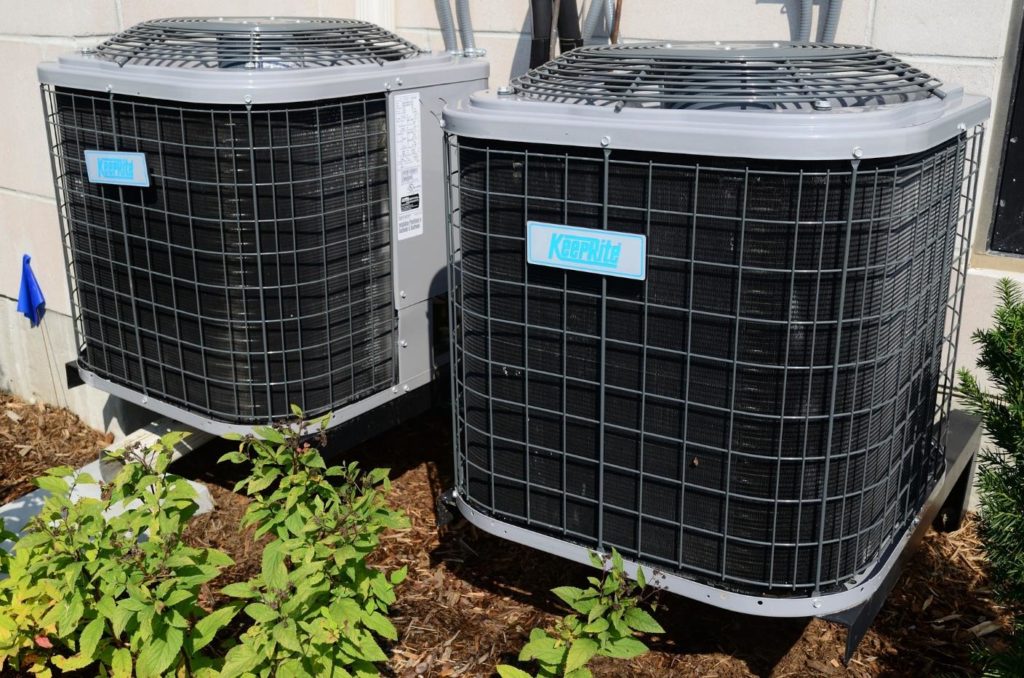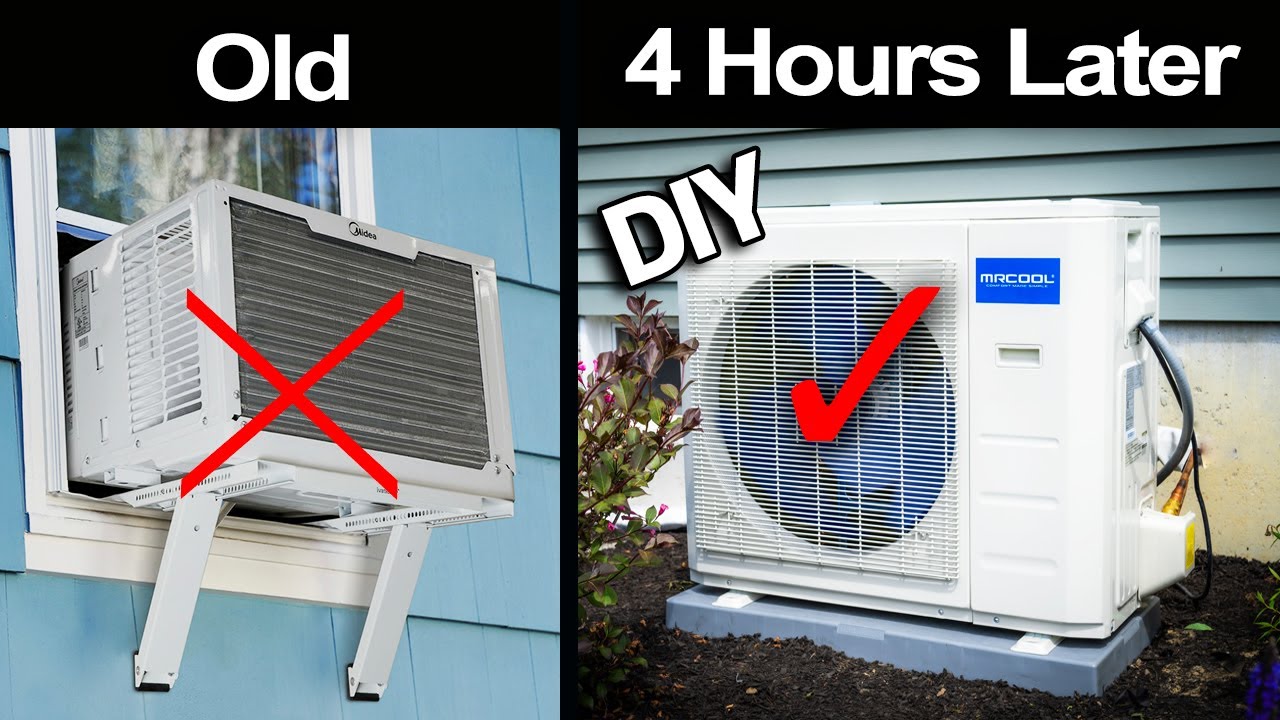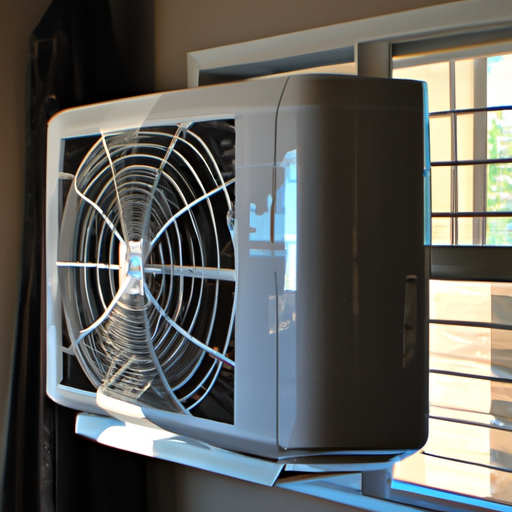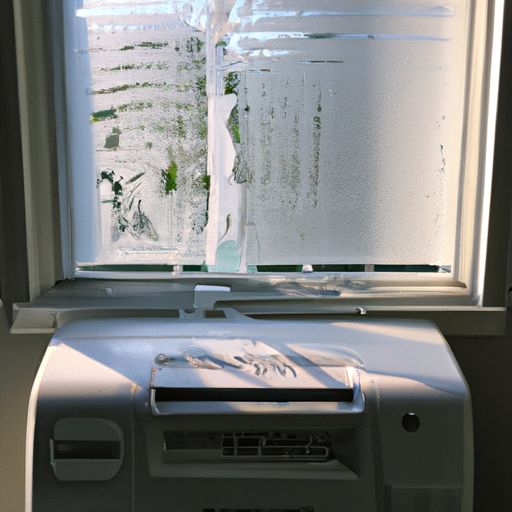Thinking about installing your own AC unit? It might seem like a daunting task, but with the right knowledge and a little bit of effort, it’s definitely doable. In this article, we’ll explore the pros and cons of DIY AC installation, providing you with the insights you need to make an informed decision. Whether you’re looking to save money or simply enjoy the satisfaction of tackling a home improvement project, we’ll guide you through the process and help you determine if installing your own AC unit is the right choice for you.
Understanding the Requirements
Assessing Your Skills and Knowledge
Before embarking on the installation of your own AC unit, it is important to assess your skills and knowledge in this area. AC installation requires a certain level of technical expertise, so it is crucial to be honest with yourself about your abilities. Do you have experience working with electrical systems? Are you familiar with HVAC systems and their components? Assessing your skills will help you determine if you have the necessary knowledge to successfully install an AC unit.
Knowledge of Local Regulations
Another important aspect to consider before installing your own AC unit is your knowledge of local regulations. Different areas have specific requirements and codes in place for HVAC installations. It is essential to familiarize yourself with these regulations to ensure that your installation complies with all necessary standards. Failure to comply with local regulations could result in fines or additional costs to rectify non-compliance issues.
Sizing and Power Requirements
Understanding the sizing and power requirements of an AC unit is crucial for a successful installation. An improperly sized unit may not cool your space effectively, while an over- or underpowered unit may lead to increased energy consumption and reduced efficiency. Take into account factors such as the size of the room, insulation levels, and the climate in your area when determining the appropriate unit size and power requirements.
Location and Space Considerations
Choosing the right location for your AC unit is essential for optimal performance. Consider factors such as the availability of electrical outlets, the proximity to the outdoor unit, and the layout of the room when deciding on the installation location. Additionally, ensure that there is enough space for proper airflow around the unit, as insufficient airflow can lead to reduced efficiency and potential damage to the unit.
Assessing the Installation Process
Types of AC Units
Before diving into the installation process, it is important to understand the different types of AC units available. The most common types include window AC units, split systems, packaged systems, ducted systems, and ductless systems. Each type of unit has its own advantages and installation requirements. Familiarize yourself with the different options to determine which one best suits your needs and capabilities.
Ducted vs. Ductless Systems
One of the key decisions you will need to make when installing an AC unit is whether to opt for a ducted or ductless system. Ducted systems use a network of ducts to distribute cooled air throughout the space, while ductless systems use individual air units mounted on walls or ceilings. Ducted systems require complex ductwork installation, making them more challenging for DIY installation. Ductless systems, on the other hand, are generally easier to install and offer flexibility in terms of zoning and control.
Window AC Units
Window AC units are a popular choice for cooling single rooms. They are relatively easy to install and require minimal modifications to the existing structure. However, it is important to ensure that the window can support the weight of the unit and that there is an appropriate electrical outlet nearby. Window AC units are best suited for small spaces and may not be suitable for cooling larger areas.
Split and Packaged Systems
Split and packaged systems are ideal for cooling larger spaces or multiple rooms. A split system consists of an indoor and outdoor unit, connected by refrigerant lines. Packaged systems, on the other hand, have all components housed in a single unit, typically installed on the rooftop or outside the building. Both types of systems require more advanced installation skills and may require professional assistance.
Heat Pump Systems
Heat pump systems are a popular choice for both heating and cooling. They work by extracting heat from the air or ground and transferring it to the indoor space. Heat pump systems can be ducted or ductless and offer energy-efficient heating and cooling solutions. However, the installation of heat pump systems can be more complex due to their additional components and refrigerant lines.
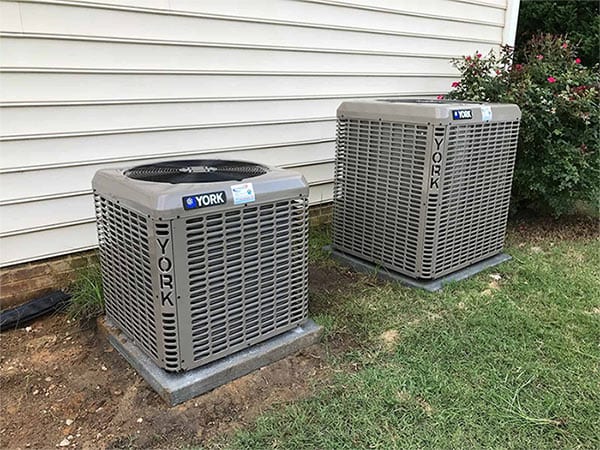
Tools and Equipment Needed
Basic Hand Tools
To install an AC unit, you will need a set of basic hand tools including screwdrivers, pliers, wrenches, and a utility knife. These tools will be used for tasks such as removing or installing screws, tightening connections, and cutting materials as needed. It is important to have a well-equipped toolbox to ensure smooth progress during the installation process.
Power Tools
Certain tasks during the AC installation may require the use of power tools. These tools can include a drill for making holes, a reciprocating saw for cutting through materials, or a wire stripper for removing insulation from electrical wires. Always follow safety guidelines when operating power tools and ensure that you have proper knowledge of their use.
Vacuum Pump and Gauges
A vacuum pump and gauges are essential tools for properly evacuating and charging the refrigerant system of the AC unit. These tools help remove any moisture or air from the system, ensuring optimal performance and preventing potential damage. It is important to carefully follow the manufacturer’s instructions when using these tools to avoid any mishaps.
Refrigerant Recovery System
If you plan to install a new AC unit, you may need a refrigerant recovery system to safely remove any existing refrigerant from the old system. Proper recovery and disposal of refrigerant are essential for environmental and safety reasons. It is important to follow local regulations and guidelines when handling refrigerant and ensure that you have the necessary equipment to do so.
Safety Equipment
When undertaking any DIY installation project, safety should always be a top priority. Make sure to have the necessary safety equipment on hand, such as gloves, goggles, and a dust mask. Additionally, having a fire extinguisher nearby is advised in case of any unexpected accidents. Remember, safety should never be compromised, and if at any point you feel uncomfortable or unsure about a task, it is best to seek professional assistance.
Considering the Challenges
Electrical Expertise
One of the main challenges of AC installation is dealing with electrical connections. AC units require proper wiring and knowledge of electrical systems to ensure safe and efficient operation. If you are not experienced or comfortable working with electrical components, it is recommended to hire a professional electrician to handle this aspect of the installation. Incorrect wiring or electrical mistakes can lead to serious damage or even pose a safety hazard.
Handling Refrigerant
Working with refrigerant can be hazardous if not done properly. Refrigerant is a substance that undergoes phase changes to produce cooling effects. It is crucial to handle refrigerant according to manufacturer guidelines and local regulations. Improper handling can result in leaks, environmental damage, or even personal injury. If you are not confident in your ability to handle refrigerant safely, it is advisable to seek professional assistance.
Proper Ventilation
Proper ventilation is essential for the efficient operation of an AC unit. It ensures that the cooled air is effectively distributed throughout the space while preventing the recirculation of stale or contaminated air. Improper ventilation can result in reduced cooling performance and potential health issues. Understanding the principles of airflow and ventilation is important when installing an AC unit to ensure optimal comfort and air quality.
Working at Heights
Installing certain types of AC units, such as split system outdoor units or rooftop packaged systems, may require working at heights. Working at heights can be dangerous and should only be done by those with proper training and equipment. If you are uncomfortable or do not have experience working at heights, it is best to hire a professional who is equipped and trained to work in such conditions.
Complexity of Ductwork
If you opt for a ducted AC system, the complexity of the ductwork installation should not be underestimated. Ductwork requires precise measurements, proper sealing, and efficient distribution of airflow. It can be a time-consuming and technically demanding task. If you are not confident in your ability to design and install ductwork correctly, it is advisable to seek professional assistance to ensure optimum system performance.
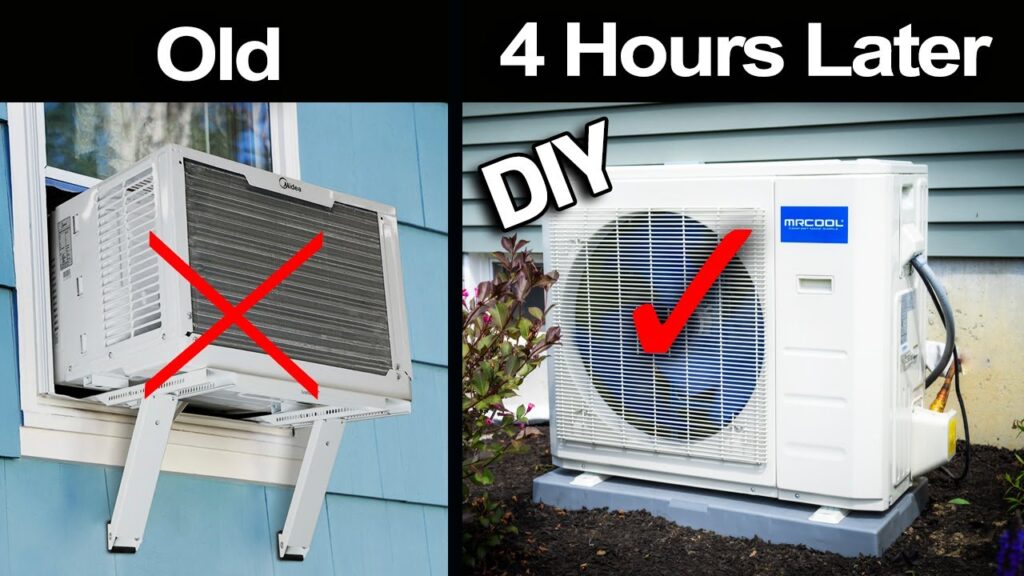
Calculating the Costs
Equipment Costs
When contemplating a DIY AC installation, it is important to factor in the costs of the necessary equipment. AC units can vary widely in price depending on their size, brand, and features. Additionally, you may need to purchase tools and equipment specific to the installation process, such as gauges or a vacuum pump. Researching and comparing prices beforehand can give you a better idea of the overall equipment costs.
Additional Materials
In addition to the AC unit itself, there may be additional materials required for the installation process. These materials can include electrical wiring, refrigerant lines, insulation, ductwork components (if applicable), and fasteners. Assessing the specific requirements of your installation will help determine the necessary additional materials and their associated costs.
Permits and Inspections
Before installing an AC unit, it is important to check if there are any permits or inspections required by your local authorities. Permitting processes and fees can vary depending on your location and the scope of the installation. Failure to obtain the necessary permits or pass inspections can result in penalties or the need to redo the installation. Research your local requirements and factor in the costs of permits and inspections when considering a DIY installation.
Professional Services
While the goal of DIY installation is to save money, it is important to consider the value of professional services. Hiring an experienced HVAC technician for complex or critical aspects of the installation, such as electrical wiring or refrigerant handling, can ensure the job is done safely and correctly. Professional services may come at an additional cost, but the peace of mind and expertise they bring can be invaluable.
Cost-Savings Analysis
To determine whether a DIY AC installation is cost-effective, it is crucial to conduct a cost-savings analysis. Compare the total costs of DIY installation (including equipment, additional materials, permits, and inspections) with the cost of hiring a professional for the entire installation. Take into account factors such as future energy savings, potential maintenance costs, and the warranty implications of self-installation. Evaluating all these aspects will help you make an informed decision about the financial feasibility of a DIY installation.
Steps to Install Your Own AC Unit
Gather the Required Information
Before beginning the installation process, gather all the necessary information. This includes the manufacturer’s installation instructions specific to your AC unit, relevant local codes and regulations, and any permits or inspections required. Having this information readily accessible will help you proceed smoothly through the installation process.
Selecting the Right AC Unit
Based on your assessment of the requirements and challenges, select an AC unit that best fits your needs and capabilities. Consider factors such as the size of the space, the cooling capacity required, and the type of unit that suits your installation area. Ensure that the unit you choose is energy-efficient and meets all relevant safety standards.
Prepare the Installation Area
Before installing the AC unit, prepare the installation area. This involves clearing the space and ensuring it is clean and free from any obstructions. Take into account the necessary clearances specified by the manufacturer for proper airflow and maintenance access. Proper preparation of the installation area will ensure a smooth and efficient installation process.
Mounting the Unit
Depending on the type of AC unit you have chosen, follow the manufacturer’s instructions for mounting the unit. Window AC units typically require securing brackets to the window frame, while split systems may require mounting on a wall or on a concrete pad for outdoor units. Ensure that the unit is secure and level to avoid potential issues with performance or stability.
Connecting Electrical Wiring
If you have the necessary electrical expertise, proceed with connecting the electrical wiring according to the manufacturer’s instructions and local electrical codes. Ensure that the power supply is turned off before starting any electrical work and follow proper safety protocols throughout the process. If you are unsure or uncomfortable with electrical work, it is recommended to hire a licensed electrician to handle this aspect of the installation.
Installing Ductwork (if applicable)
If you have opted for a ducted system, installing the ductwork is a crucial step. Follow proper design guidelines and calculate the appropriate duct sizes to ensure efficient airflow. Be meticulous in sealing all connections and insulating the ducts to prevent any air leakage. Properly installed and sealed ductwork is key to optimizing the performance and energy efficiency of your AC system.
Connecting Refrigerant Lines
If your AC unit uses refrigerant, follow the manufacturer’s instructions for properly connecting the refrigerant lines. Pay attention to the recommended practices for handling refrigerant, such as purging the lines of air and ensuring proper torque on the connections. It is important to adhere to these guidelines to prevent refrigerant leaks or damage to the system.
Completing the Installation
After completing the necessary installation steps, double-check all connections and ensure that everything is secure and functioning correctly. Take the time to inspect the entire installation and make any necessary adjustments or corrections. Proper completion of the installation will ensure that your AC unit operates at its optimal capacity.
Testing and Troubleshooting
Once the installation is complete, thoroughly test the AC unit to ensure that it is cooling effectively. Monitor the temperature and airflow to ensure that they meet your expectations. If any issues arise during testing, refer to the manufacturer’s troubleshooting guide or seek professional assistance if necessary. It is important to address any problems promptly to avoid further complications or possible damage.
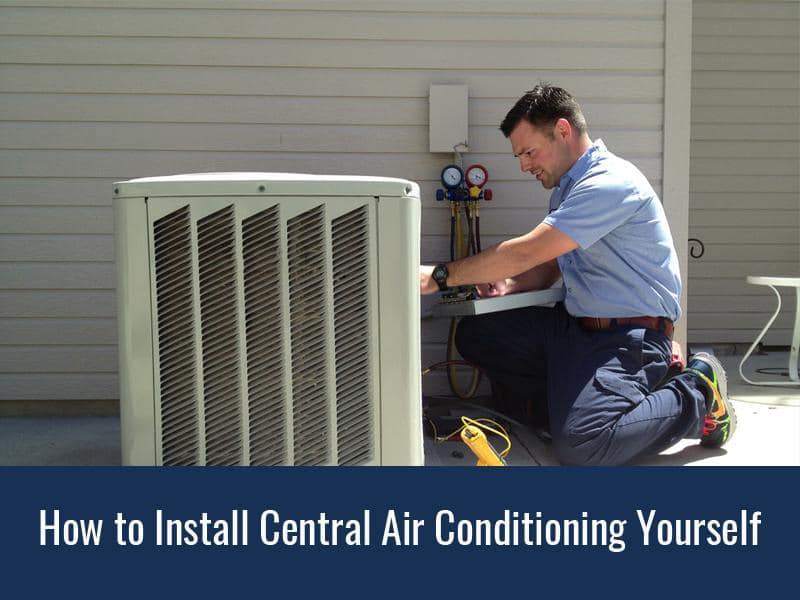
Safety Considerations
Turning Off Power
Before beginning any work on the AC unit or its electrical components, always ensure that the power supply is turned off at the main breaker. This helps prevent electrical shocks or accidents when handling live wires. Treat all electrical connections with caution and follow proper safety procedures to minimize the risk of injury.
Proper Lifting and Moving Techniques
AC units can be heavy and awkward to handle, especially during installation. Practice proper lifting and moving techniques to avoid strains or injuries. If the unit is too heavy to lift by yourself, enlist the help of another person or use lifting equipment to ensure safe and secure movement.
Working with Electrical Connections
When working with electrical connections, always prioritize safety. Avoid touching live wires, use insulated tools, and ensure that all connections are tight and secure. If you are unsure or uncomfortable with electrical work, it is best to hire a licensed electrician to handle this aspect of the installation to minimize the risk of electrical accidents.
Handling Refrigerant Safely
Refrigerant is a potentially hazardous substance and should be handled with caution. Follow the manufacturer’s guidelines for proper handling procedures and use appropriate safety equipment, such as gloves and goggles, when working with refrigerant. Avoid inhaling refrigerant vapors and be mindful of the environmental impact of any leaks or spills.
Avoiding Falls and Injuries
When installing an AC unit, there is a risk of falls or injuries, especially if working at heights. Always take precautions by using proper safety equipment, such as harnesses or scaffolding, and ensuring stable footing. If you are uncomfortable with heights or lack the necessary equipment, it is safer to hire a professional who is trained and equipped to work in such conditions.
When to Hire a Professional
Lack of Skills and Knowledge
If you lack the necessary skills and knowledge to install an AC unit, it is best to hire a professional who specializes in HVAC installations. Proper installation requires expertise in electrical work, refrigerant handling, and overall system design. Hiring a professional ensures that the installation is done correctly and reduces the risk of potential issues or damage.
Legal and Insurance Requirements
Some areas may have legal or insurance requirements that dictate who can install HVAC systems. It is important to familiarize yourself with these regulations to ensure compliance. Hiring a licensed professional can provide peace of mind, knowing that the installation is being carried out by someone who meets all legal and insurance requirements.
Complex Installations
If your installation involves complex tasks such as extensive ductwork, working on multiple floors, or integrating with existing HVAC systems, it is advisable to hire a professional. These types of installations often require specialized knowledge and equipment that may not be readily available to DIY enthusiasts. Investing in professional services for complex installations can save time, effort, and potential complications down the line.
Warranty Considerations
Installing an AC unit yourself may void the manufacturer’s warranty. Many manufacturers require professional installation to ensure that the unit is properly set up and to avoid any issues that may arise from incorrect installation. Before deciding on a DIY installation, review the warranty terms and conditions to determine if self-installation is permitted. It is important to consider the potential cost implications of voiding the warranty when making your decision.
Potential Cost Savings vs. Risks
While DIY AC installation may seem like a cost-effective option, it is essential to weigh the potential cost savings against the associated risks. Mistakes during installation can lead to expensive repairs or replacements down the line. Additionally, if the installation is not done correctly, it may result in reduced energy efficiency or even damage to the unit. Carefully consider the financial implications and risks involved before deciding to install an AC unit yourself.
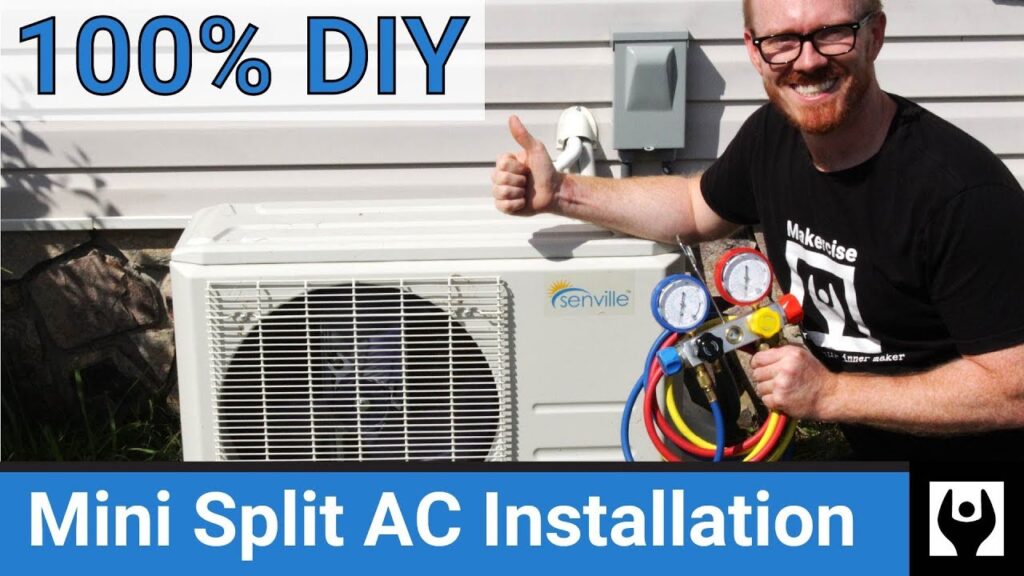
Permits, Codes, and Inspections
Understanding Local Regulations
Local regulations can vary when it comes to HVAC installations. It is essential to understand the specific regulations in your area before proceeding with the installation. Research the requirements, permits, and codes that may apply to your project. Failure to comply with local regulations can result in fines, penalties, or the need to redo the installation to achieve compliance.
Permitting Process
Certain areas require permits for the installation of AC units. The permitting process typically involves filling out application forms, providing necessary documentation, and paying any required fees. It is important to familiarize yourself with the required permits and follow the appropriate steps to obtain them. The permit process helps ensure that installations meet minimum safety and quality standards.
Code Compliance
Local codes specify the technical standards and requirements for HVAC installations. These codes cover various aspects, including electrical wiring, refrigerant handling, ventilation, and safety. It is crucial to follow these codes to ensure compliance and safe operation. Failure to comply with the codes can result in penalties and may require rework to meet the necessary standards.
Inspection Requirements
In addition to obtaining permits, inspections are often required to ensure that the installation meets the approved plans and complies with the applicable codes. Inspections typically occur at various stages of the installation process, including before closing up any walls or structural components. Inspections help identify any issues or non-compliance before they become more significant problems.
Consequences of Non-Compliance
Non-compliance with local regulations, permits, or codes can have serious consequences. This includes potential fines, penalties, or even the need to remove and redo the installation at your own expense. Additionally, non-compliant installations may void warranties and insurance coverage, leaving you responsible for any future repairs or damage caused by the installation. It is crucial to prioritize compliance to avoid these potential consequences.
Pros and Cons of DIY AC Installation
Advantages of DIY Installation
One of the primary advantages of DIY AC installation is potential cost savings. By eliminating labor costs, you can often save a significant amount of money compared to hiring a professional. Additionally, installing an AC unit yourself can provide a sense of accomplishment and allow you to have a hands-on understanding of your HVAC system.
Disadvantages of DIY Installation
While cost savings and personal satisfaction are appealing, there are also disadvantages to consider. AC installation requires technical expertise, and mistakes can be costly to rectify. Lack of knowledge or experience can result in suboptimal performance, reduced energy efficiency, or even damage to the unit. It is essential to be honest about your abilities and consider the potential risks involved.
Personal Skills and Confidence
DIY AC installation requires a certain level of technical skills and knowledge in areas such as electrical work, refrigerant handling, and system design. Evaluate your personal skills and confidence honestly to determine if you possess the necessary expertise. If you are unsure or uncomfortable with any aspect of the installation, it is best to seek professional assistance.
Project Complexity and Risks
The complexity of an AC installation varies depending on factors such as the type of unit, the scope of the project, and the specific challenges involved. Complex installations with extensive ductwork, multiple floors, or integration with existing systems can be particularly challenging and may pose a higher risk of errors. Consider the complexity of your project and weigh it against your capabilities before deciding on a DIY installation.
Financial Considerations
While DIY AC installation may initially seem more cost-effective, it is important to consider the potential long-term financial implications. Mistakes during installation can lead to expensive repairs or replacements, ultimately costing more than hiring a professional from the start. Additionally, voiding the manufacturer’s warranty may result in increased maintenance or replacement costs down the line. Assess the potential financial risks before making a decision.
In conclusion, the decision to install your own AC unit involves careful consideration of your skills, knowledge, and comfort level with technical tasks. Understanding local regulations, sizing and power requirements, and the challenges involved in the installation process is crucial. Assess the costs, both immediate and potential long-term, and evaluate the advantages and disadvantages of DIY installation. If you feel confident in your abilities and have the necessary expertise, a DIY AC installation can be a rewarding project. However, if you lack the skills, face complex challenges, or prefer the assurance of professional expertise, hiring a licensed HVAC technician is a wise choice. Ultimately, the goal is to have a safe, efficient, and properly functioning AC system that meets your cooling needs.
